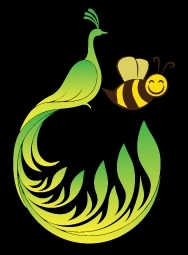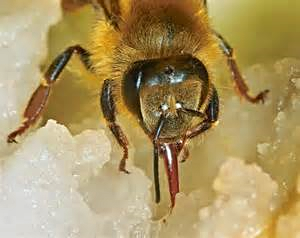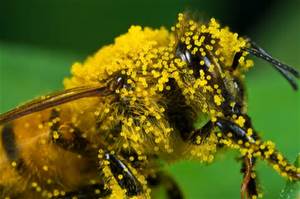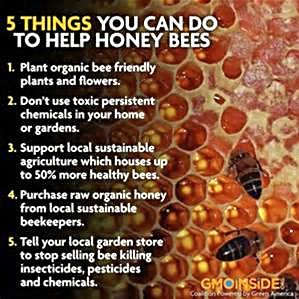Curious about honeybees? They are interesting creatures with a lot to offer and plenty to teach us. Here is some little tidbits to get you started on your quest about the honeybee.
Did you know?
· A single bee only collects 1/12 of a teaspoon of honey it its lifetime.
· It would take 560 worker bees their entire life to make one pound of honey.
· Those workers would visit two million flowers and fly a total of 55,000 miles- so l don’t waste a drop.
· Some theorists believe that if the bee were to disappear, humans would have about 4 years left to live as hundred of thousands of plants and food would also die off.
· Each colony could have 20,000 to 80,000 worker bees inside. All lead by only 1 queen bee.
· A worker bee lives for about 6 weeks, the queen bee can live for years.
How does the Honeybee make honey?
The worker bee when old enough start foraging when the weather becomes warm enough to fly, about 50-55 degrees or so. The bees can travel up to 4 miles away visiting hundreds of flowers collect nectar in its mouth. This nectar mixes with an enzyme in the bees mouth which together is deposited into honeycomb cells. Here bees mix the nectar in the cells, as heat from the bees evaporate some of the water that makes up the nectar. As the liquid becomes thicker it starts turning into honey, when it is at the right consistency, the bees cover the cell with wax. The honey is ready to harvest. It takes the bees making wax, building the comb, foraging for nectar, mixing and evaporating the nectar, and capping the honey to make the honey. It truly takes the entire colony to do this.
A worker bee drinking nectar.
So how do the bees help flowers and fruit?
As bees travel from flower to flower collecting nectar, they collect pollen as well. The pollen from the flower stick to the bees face, legs, and body of the bee. The bee can also pack some away on her hind legs in an area called a ‘pollen basket’ to bring back to the colony as food. As the bees visit hundreds of flowers a day, the pollen from the first flower rubs off on the next flower as pollen from that flower rubs onto the bee. This process continues. Some plants like beans, almonds, strawberries, and many others only pollinate this way. There are some plants that use the wind, water, or self-pollinate. Most flowers, fruits, and vegetables require help from pollinators like the honey bee.
How do the bees make the wax?
When a young worker bee is between 12 and 20 days old they develop a gland in the abdomen that uses the sugar from the honey to make small flakes of wax. The other worker bees collect the small flakes excreted from the young bee and use their mouths to make it soft and pliable. They then carry it to the comb they are working on to make new comb, cap honey, or fix older comb. It takes about 6 pounds of honey to make one pound of wax. That is what it takes to feed the bees that make the wax and to supply the sugar for the wax.
A young bee secreting wax flakes.
Will a bee sting kill me?
Generally, the sting of a honeybee will not kill you, but it will kill the bee. The honey bee can only sting once and this will kill them. For this reason, they try to avoid stinging unless they are very much provoked. The average person can tolerate about 10 sting per pound of body weight, that’s over 1000 stings. If a bee does sting you, it releases a venom. This venom is different from wasps, bumblebees, or hornets. Bee venom has been used to relieve arthritis, stiff joints, and nerve pains. Local swelling or inflammation would be expected with any sting. A life threatening emergency called anaphylaxis is rare and would require an Epipen and a trip to the hospital. Less than 1 percent of the population is this allergic to honey bees.
If you do get stung by a honey bee, the first thing you do is remove the stinger. Hornet and wasps would not leave a stinger behind. Next apply ice to the area to help decrease the swelling. The pain will subside in a few minutes. Swelling may continue for about 48 hours depending on the location. Soft skin like the face or neck will swell more than the foot would. If any sting happens in the mouth, near the eyes, or change a person’s ability to breath, seek medical attention immediately. If any questions or concerns happen with a sting, see a medical professional. Most often stings are harmless, just irritating for a short while. Ask any beekeeper, stings will happen, but you get used to it.
A worker bee leaving her stinger behind.
What can I do to help?
You can do many things to help the honeybee. First of all, please do not use pesticides to kill bugs on your flowers. Bees are bugs too, it will kill them. Try using organic weedkillers if you spray your weeds instead of pulling them. The chemicals in weed killers have been know to stick to the bees and they carry it back to the hive. Plant more flowers than can bloom throughout the year. For your home gardens, try using organic fertilizers and treatments. Chemicals do not break down and may be harmful to the bees. Many chemicals have been found in the honey, wax, and hive of the bees.
If flowers are not your thing, you can also purchase local honey. Local honey from a beekeeper you know, should be natural. Bulk honey from stores may be mixed with corn syrup. By purchasing from your local beekeeper you are helping that beekeeper keep local bees in your area. These are bees that are pollinating local fruit and vegetables. The local honey is also made from the plants that surround you and may help with seasonal allergies.
If you are thinking of keeping bees yourself, look into a local beekeeping group for classes or mentors to help you on your bee journey.







